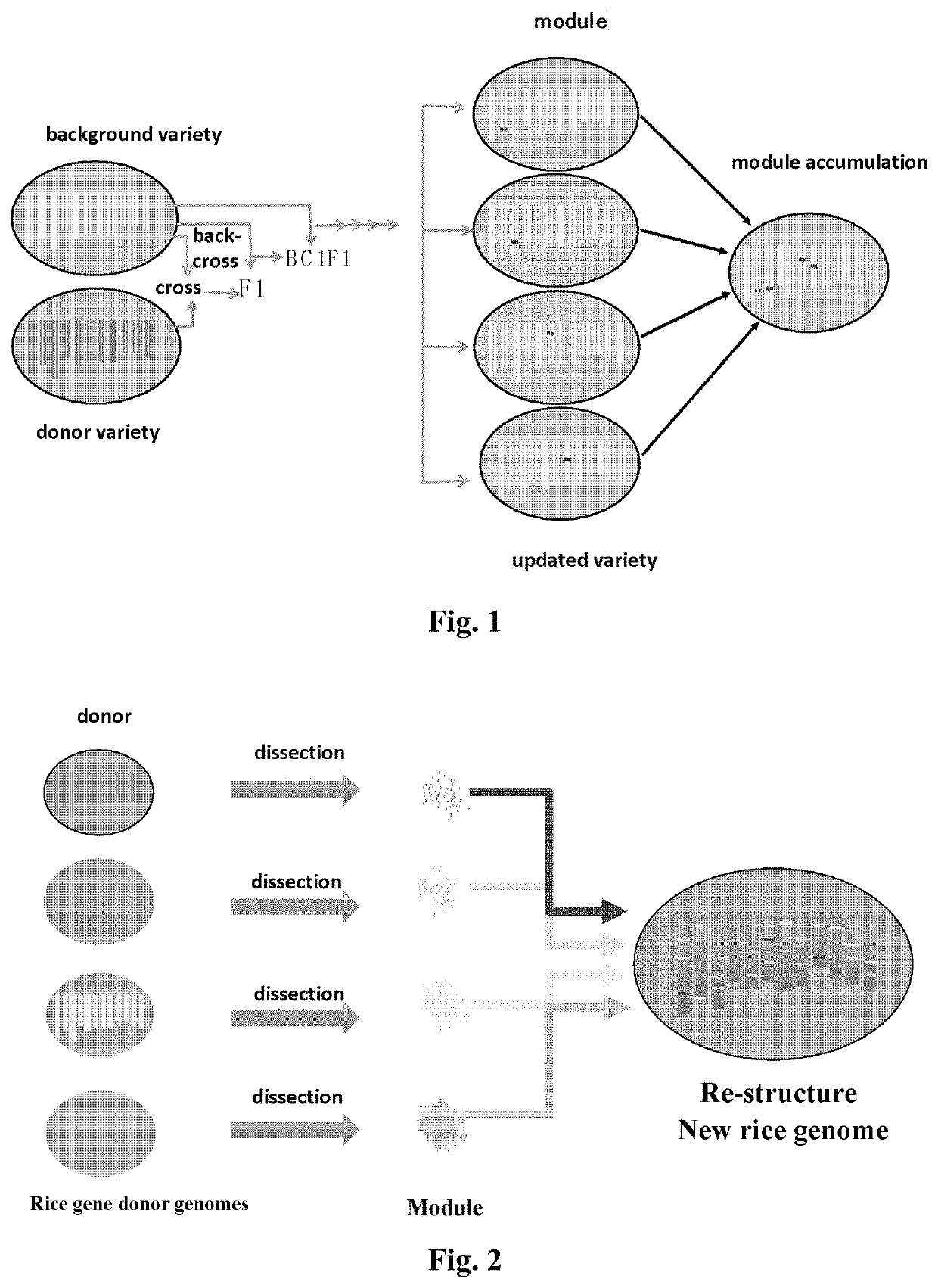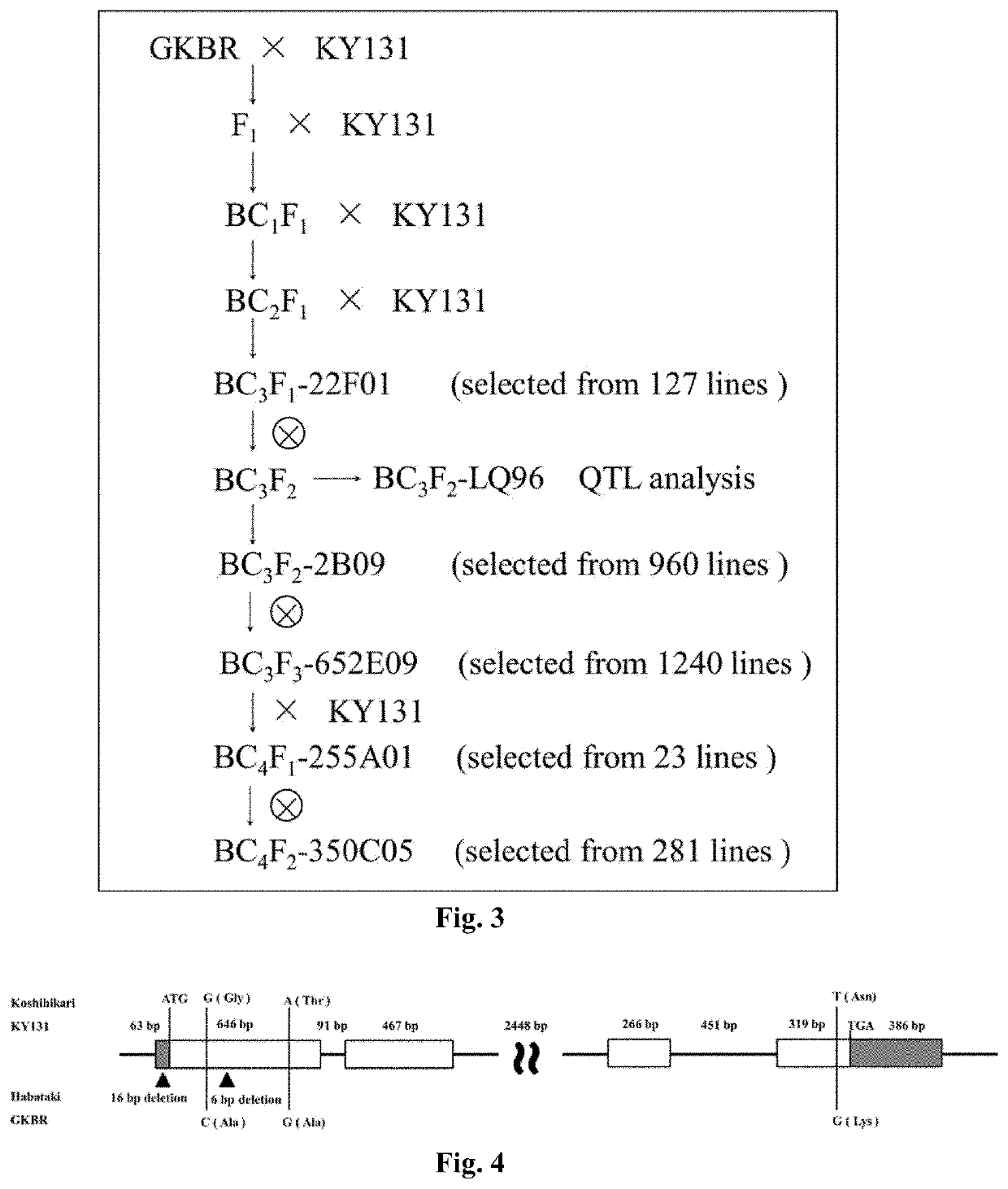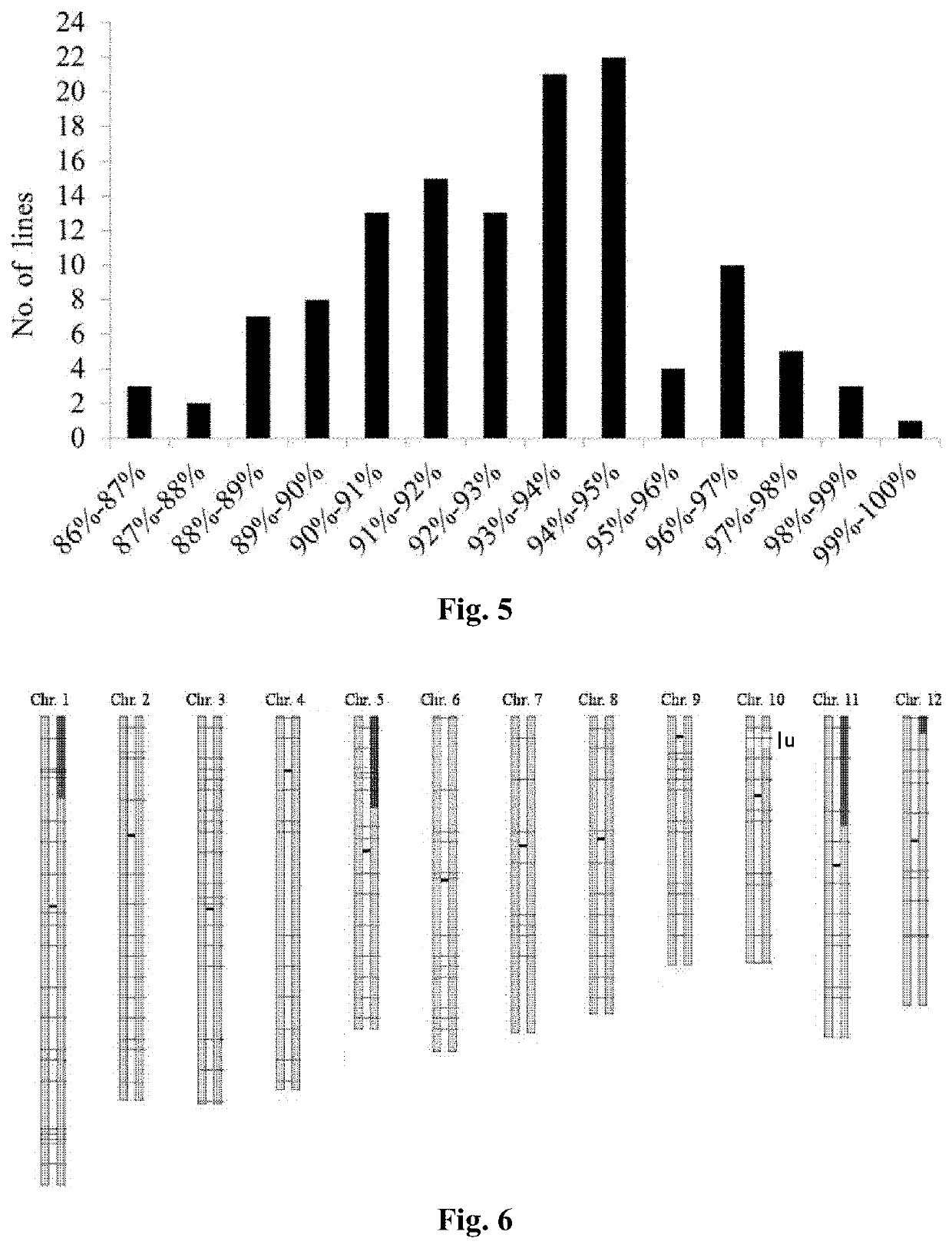Method for improving plant variety
a plant variety and plant technology, applied in the field of plant breeding, can solve the problems of low efficiency of selection of complex traits, inefficient identification of polymorphic markers between parents, time-consuming, etc., and achieve the effect of simple and reliable methods
- Summary
- Abstract
- Description
- Claims
- Application Information
AI Technical Summary
Benefits of technology
Problems solved by technology
Method used
Image
Examples
example 1
[0108]Using high-yielding gene modules to improve and upgrade the main rice variety, Kongyu 131
[0109]Methods and Results:
[0110]1.1 Experimental Materials
[0111]1.1.1 Rice Material
[0112]The recurrent parent Kongyu 131 (background variety): it is an early maturity japonica rice variety grown in the high latitude zone, has strong tillering ability, is fertilizer tolerant, lodging resistant and cold tolerant, and requires an active accumulated temperature of 2320° C. Seeding blast grade 9, leaf blast grade 7, panicle neck blast grade 9 are artificially inoculated, and blast grade 9, leaf blast grade 7, panicle neck blast grade 7 are infected naturally. The head milled rice rate is 73.3%, the amylose content is 17.2%, the protein content is 7.41%, and the average yield in Heilongjiang Province is 7684.5 Kg / ha.
[0113]Donor parent GKBR: it is an indica rice with large panicles and is blast resistant. The growth period of GKBR in Guangzhou, China, is 113 days in late season, but normal headin...
example 2
[0174]Improving Kongyu 131 by Updating the Grain Length Locus GS3 to Increase the Yield of Kongyu 131
[0175]The world's population continues to increase, and it is a great challenge to enhance the production of crops to supply the increasing demand continuously. Although traditional breeding methods have made a great contribution to solving human needs for food, these methods have problems such as large workload, unpredictability, and non-repetition. The present disclosure accurately updates GS3 locus of Kongyu 131 through the method of genome upgrading, and overcomes the problems of large workload, unpredictability, and non-repeatable in the traditional breeding methods. We use this method to improve the grain length locus GS3 of Kongyu 131. Single nucleotide polymorphism (SNP) marker primers between Kongyu 131 and donor BR were designed by genomic resequencing of Kongyu 131 and the donor BR; 219 pairs of markers were selected using high resolution dissolution curve analysis (HRM) t...
PUM
| Property | Measurement | Unit |
|---|---|---|
| Digital information | aaaaa | aaaaa |
| Digital information | aaaaa | aaaaa |
| Volume | aaaaa | aaaaa |
Abstract
Description
Claims
Application Information
 Login to View More
Login to View More - R&D
- Intellectual Property
- Life Sciences
- Materials
- Tech Scout
- Unparalleled Data Quality
- Higher Quality Content
- 60% Fewer Hallucinations
Browse by: Latest US Patents, China's latest patents, Technical Efficacy Thesaurus, Application Domain, Technology Topic, Popular Technical Reports.
© 2025 PatSnap. All rights reserved.Legal|Privacy policy|Modern Slavery Act Transparency Statement|Sitemap|About US| Contact US: help@patsnap.com



